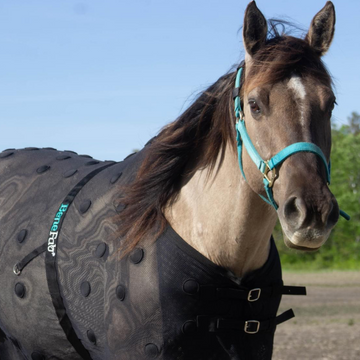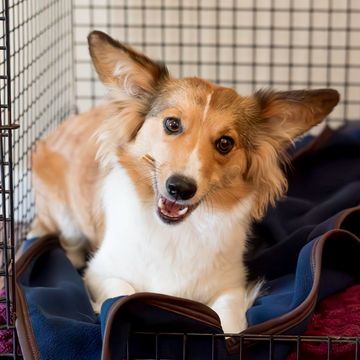The winter causes many horse owners to be particularly cautious of their horse’s health care. The rain, ice, wind, snow, and mud can cause all kinds of problems for your equine partner. Cold winter weather means that our horses may be spending more time inside their stall. It is tempting to close up the barn to keep warm but doing this can compromise the quality of the air.

Recurrent Airway Obstruction (RAO), formerly known as chronic obstructive pulmonary disease (COPD), or heaves, is a disease of the equine lung. RAO is a chronic, non-infectious airway condition in horses that is a result of an allergic reaction to inhaled particles such as, mold or dust found in feed or bedding. Poor ventilation can result in high levels of allergens from molds and endotoxins in the air. Typically, one of the first clinical signs observed by an owner is an occasional cough.
As the disease progresses the clinical signs will become more apparent and include:
- Coughing
- Exercise intolerance
- Increased respiratory rate
- Nasal discharge
- Wheezing
- Weight loss
- Flaring of the nostrils
Horses older than 5 or 6 years of age are most frequently affected, and the prevalence increases with age. While there is no definitive cure for heaves, most horses with mild to moderate RAO can be managed with proper treatment and remain asymptomatic. The most important step in treating and preventing RAO is to provide fresh air and a dust-free environment. When management changes are not enough, it may be necessary to administer anti-inflammatory drugs and bronchodilators.
- Keep horses on pasture or in an open paddock and out of barns and stables whenever possible.
- Use peat, shredded paper, or wood shavings for bedding. Avoid hay and straw.
- Remove dust, cobwebs, and loose feed from indoor enclosures.
- Horses should be stalled in well ventilated areas.
- Feed hay flakes in hay nets; soak the flakes for a few minutes until wet to reduce dust.
- Feed a chest high level.
If you suspect that your horse has any signs of RAO, make an appointment with your veterinarian ASAP. Early intervention and treatment can help decrease or eliminate clinical signs and allow your horse to return to his normal level of activity.






















